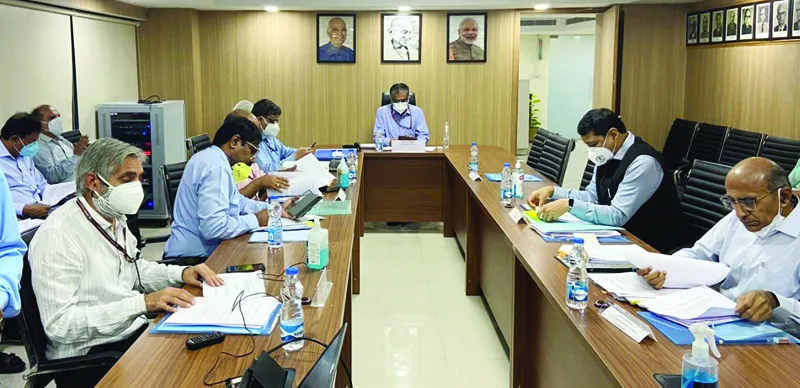The Cauvery Water Management Authority’s meeting is going to be held in New Delhi on June 16, 2023.
About the meet:
- The agenda for the meeting will be;
- Advent of the southwest monsoon,
- the expected pattern of rainfall and
- The likely flows in the Cauvery.
- Tamil Nadu officials has clarified that there is no discussion on Mekedatu dam Project.
Mekedatu Reservoir Project:
- It aims to store and supply water for drinking purposes for the Bengaluru city.Around 400 megawatts (MW) of power is also proposed to be generated through the project.
- In 2018, Tamil Nadu approached the SC against the project even if Karnataka had held that it would not affect the flow of water to Tamil Nadu.
- TN is opposed to any project being proposed in the upper riparian unless it was approved by the SC.
| According to the case filed by Tamil Nadu in court, the planning of the Mekedatu dam project, with a capacity of 67.16 thousand million cubic feet (TMC), generation of 400 MW, “is in gross violation” of the decision of the Cauvery Water Disputes Tribunal of February 5, 2007, which was affirmed by the Supreme Court on February 16, 2018. |
Cauvery River and its Tributaries:
- The Cauvery River (Kaveri) is designated as the ‘Dakshi Bharat ki Ganga’ or ‘the Ganga of the South’.
- Origin: The Cauvery River rises at an elevation of 1,341 m at Talakaveri on the Brahmagiri range near Cherangala village of Kodagu (Coorg) district of Karnataka.
- The total length of the river from origin to an outfall is 800 km.
- It flows in a south-easterly direction for 705 km through the states of Karnataka and Tamil Nadu and descends the Eastern Ghats in a series of great falls.
- Before emptying into the Bay of Bengal south of Cuddalore, Tamil Nadu the river breaks into a large number of distributaries forming a wide delta called the “garden of southern India”
- The Cauvery basin extends over states of Tamil Nadu, Karnataka, Kerala, and Union Territory of Puducherry draining an area of 81 thousand Sq.km.
- Its Tributaries:
- Left Bank: the Harangi, the Hemavati, the Shimsha, and the Arkavati.
- Right Bank: Lakshmantirtha, the Kabbani, the Suvarnavati, the Bhavani, the Noyil, and the Amaravati join from the right.
- The river descends from the South Karnataka Plateau to the Tamil Nadu Plains through the Sivasamudram waterfalls (101 m high).
Cauvery River Water Dispute:
- The dispute involves 3 states and one Union Territory (Tamil Nadu, Kerala, Karnataka and Puducherry).
- The genesis of the dispute is 150 years old and dates back to the two agreements of arbitration in 1892 and 1924 between the then Madras presidency and Mysore.
- It entailed the principle that the upper riparian state must obtain consent of lower riparian state for any construction activity viz. reservoir on the river Cauvery.
- To resolve the matter, the CWDT (Cauvery Water Disputes Tribunal) was established in 1990 which took 17 years to arrive at the final order (2007) on how Cauvery water should be shared between the 4 riparian states in normal rainfall conditions.
- CWDT was constituted by the Central Government, in exercise of the powers conferred by section 4 of the Inter-State River Water Disputes Act, 1956.
Role of Cauvery Water Management Authority (CMA):
- It has been created as per the Cauvery Management Scheme earlier framed by Centre and approved by Supreme Court.
- The CMA will be to secure implementation and compliance of the Supreme Court’s order in relation to “storage, apportionment, regulation and control of Cauvery waters”.
- CMA will also advise the states to take suitable measures to improve water use efficiency.
- It will do so by promoting use of micro-irrigation, change in cropping patterns, improved farm practices and development of command areas.
- The CMA will also prepare an annual report covering its activities during the preceding year




